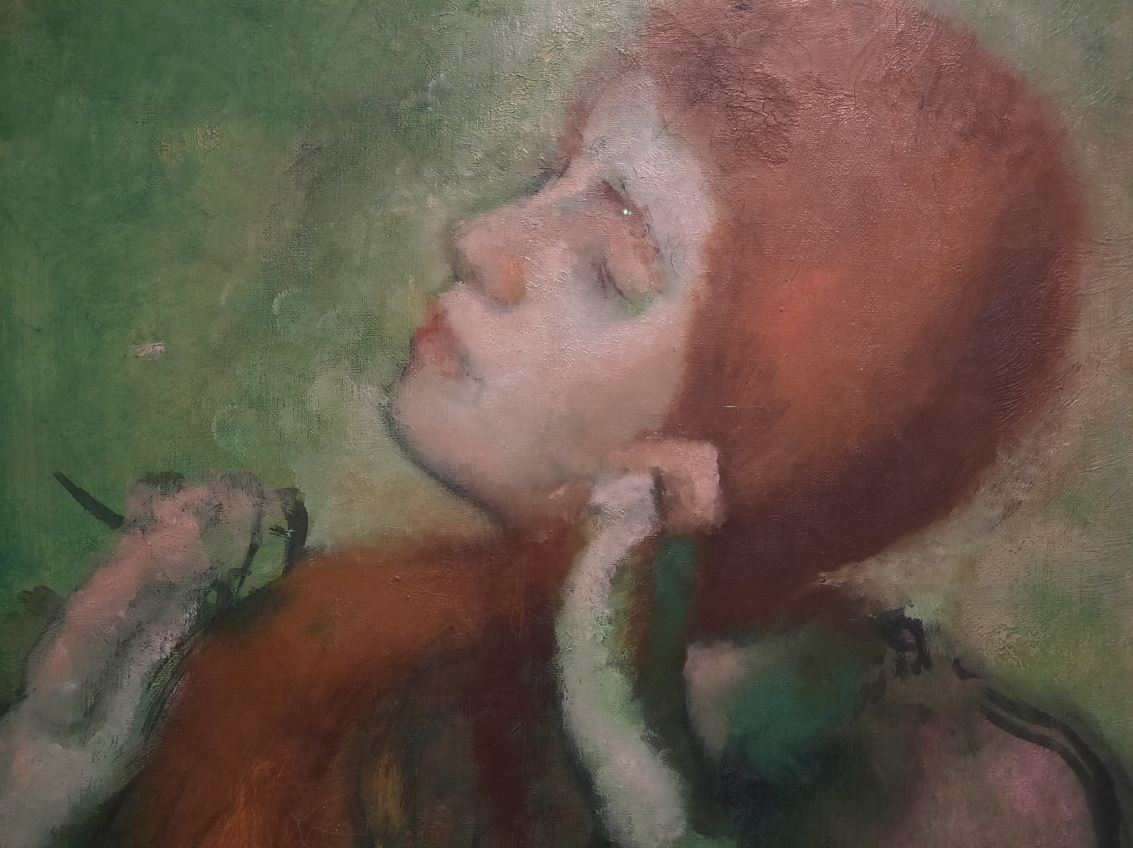Gauguin and the Impressionists – Royal Academy, London
A review of Gauguin and the Impressionists at the Royal Academy. Wonderful exhibition, wonderfully quiet galleries to take your time and explore.
Covid Diaries No More! Well, Sort Of…
This is my first blog post in a long (and I mean long) time which isn’t a Covid Diaries entry. Mainly because I already wrote about how the Royal Academy is managing social distancing and other Covid-19 measures when I saw their Picasso and Paper exhibition. The easing of lockdown is still the context in which I saw this exhibition, however, and in some ways I think I will look at this period of cultural institutions making forays into reopening as a blissful time of mostly quiet galleries where I could take my time and take in the art.
This was definitely the case with Gauguin and the Impressionists: masterpieces from the Ordrupgaard Collection at the Royal Academy. The Academy has really done well with signposting pathways through the building; having staff on hand to assist; and most importantly keeping ticket numbers low so that visitors can reasonably maintain a distance from each other. On a hot London afternoon, visiting this jewel of an exhibition in peace and quiet (and air-conditioned rooms) was heavenly.
A Danish Private Collection in London
Anyway, enough about the trials and tribulations (and unexpected benefits?) of 2020. Gauguin and the Impressionists presents part of a private collection of Impressionist and Pre/Post-Impressionist paintings. Danish art lover and insurance salesman Wilhelm Hansen gathered them together beginning in 1916.
I don’t know about you, but most exhibitions I’ve seen which focus on an individual collector fall into two categories. There are those of current collectors wanting to promote their collection (and thereby themselves). And then there are those collectors who were contemporary to the artists and often buying works directly (I’m thinking of one I saw a few years ago on Gertrude Stein and family at the Grand Palais in Paris).
Less common is one like this, where the collector was buying predominantly/entirely on the secondary market. Especially where he has managed to hand down something so representative and well-selected to the present day. There is one caveat to this with Hansen’s collection however. In 1922 he lost money when a Danish bank collapsed, and had to sell much of his collection. He continued to purchase once he was in a better financial position, acquiring some great works. The collection, however, definitely has a sense of loss and change as a result.
Impressionist Works Supported by a Great Audioguide
In terms of what Hansen collected, the exhibition does a very good job of showing this. There are 3-4 rooms in total: it begins with what I would call classic Impressionists – Monet, Sisley, Pissarro etc. The works here are nicely representative, and the exhibition balances well the focus on the collectors and the paintings/artists. As well as a solid introduction, some painting labels describe how particular works entered the collection.
A great audioguide which is neither physical nor an app supports the focus on the paintings/artists. Regular readers will know I generally dislike audioguides, so this is high praise indeed. It uses a browser/smartphone rather than hardware, and visitors get a link in their pre-visit information email. It gives additional information on a dozen or so works throughout the exhibition, and background on the artist’s working practices. Despite my general dislike of audioguides I would highly recommend this one. It has just enough information to add something meaningful, without dictating the pace by having too many/too long clips.
Pre- and Post-Impressionism
Once the scene is set with the core of the collection, the next room takes in the origins of Impressionism. Hansen also collected a representative sample of artists like Courbet, Daubigny and the Barbizon School, in whose footsteps the Impressionists followed. This is interesting to see after the plein air philosophy and rapid brushwork of the Impressionists has been established. Looking for example at the mix of classically-rendered deer and impressionistic snowy backdrop in a work by Courbet lends a new insight to these forebears. It really demonstrates the value of Hansen starting his Impressionist collection with slightly older works.
The third room is divided in two. There is a brief section on Impressionist women (both artists and sitters). I didn’t learn an awful lot from this other than coming across Eva Gonzalès, Impressionist painter and Manet’s only pupil. The final section is devoted to Post-Impressionism: Gauguin, Cézanne, Redon and the like. A lot of it is down to personal preference, but I thought there were some particularly nice paintings here. I particularly liked the ones by Gauguin. The exhibition tackles his dodgy sexual practices with Tahitian girls and projected colonial fantasies head on; nonetheless the vibrant colours and unusual compositions of the works selected here put them among my favourites.
Final Thoughts
So overall Gauguin and the Impressionists is a really nice, well-curated, gem of an exhibition from the Royal Academy. It’s certainly enough to make me want to go to the Ordrupgaard collection if I’m ever back in Denmark. And I frankly prefer little overview exhibitions like this one to trying to take in Impressionism through massive galleries in the Musée d’Orsay or the like. The exhibition is currently sold out but more tickets are going on sale at some stage. Sign up to the Royal Academy’s mailing list if this sounds like your kind of thing.
Salterton Arts Review’s Rating: 4.5/5
Gauguin and the Impressionists: masterpieces from the Ordrupgaard Collection until 18 October 2020
If you see this after your page is loaded completely, leafletJS files are missing.
















6 thoughts on “Gauguin and the Impressionists – Royal Academy, London”